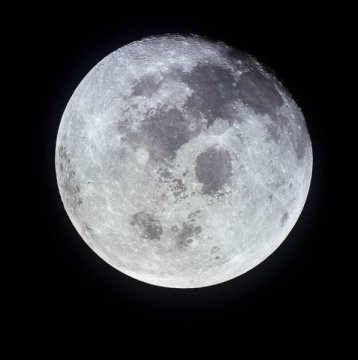A study led by researchers provides new insight into the Moon’s excessive equatorial bulge, a feature that solidified in place over four billion years ago as the Moon gradually distanced itself from the Earth according to Science daily.
The research sets parameters on how quickly the Moon could have receded from the Earth and suggests that the nascent planet’s hydrosphere was either non-existent or still frozen at the time, indirectly supporting the theory of a fainter, weaker Sun that at the time radiated around 30 percent less energy than it does today.
“The Moon’s fossil bulge may contain secrets of Earth’s early evolution that were not recorded anywhere else,” said Shijie Zhong, a professor and the co-lead author of the new research. “Our model captures two time-dependent processes and this is the first time that anyone has been able to put timescale constraints on early lunar recession.”
The Moon currently recedes from the Earth at a rate of about 4 centimeters per year according to lunar laser ranging observations from the missions. The recession is believed to result from gravitational or tidal interaction between the Earth and Moon. The same process also causes Earth’s rotation to slow down and the length of day to increase.
Scientists have theorized that tidal and rotational forces shaped the Moon after it separated from Earth, cooled and moved farther from the planet. The effects of these forces flattened the Moon slightly at its poles and solidified a permanent bulge in the lunar crust, creating the feature known as the fossil bulge. About 200 years ago, mathematician and physicist Pierre-Simon Laplace determined that the Moon’s equatorial bulge was 20 times too large for its rotational rate.
The timing and necessary conditions of this fossil bulge formation have remained largely unknown given that no physical models have ever been formulated for this process. Using a first-of-its-kind dynamic model, Zhong and his colleagues determined that the process was not sudden but rather quite slow, lasting several hundred million years as the Moon moved away from the Earth about 4 billion years ago.
But for that to have been the case, Earth’s energy dissipation in response to tidal forces-which is largely controlled by the oceans for the present-day Earth-would have to have been greatly reduced at the time.
“Earth’s hydrosphere, may have been frozen all the way down, which would have all but eliminated tidal dissipation or friction,” Zhong said, adding that a weaker, fainter young Sun could have made such conditions possible in theory.
The “snowball Earth” hypothesis has been suggested previously for the Neoproterozoic era approximately 600 million years ago based on geological record. Similar ideas have also addressed the possibility of a fainter young Sun, but direct observational evidence in the geological record is currently lacking, making it the subject of debate among scientists.
The researchers plan to continue optimizing their model and will attempt to fill in other knowledge gaps about the Moon and Earth’s early days between 3.8 and 4.5 billion years ago.
N.H.Kh

